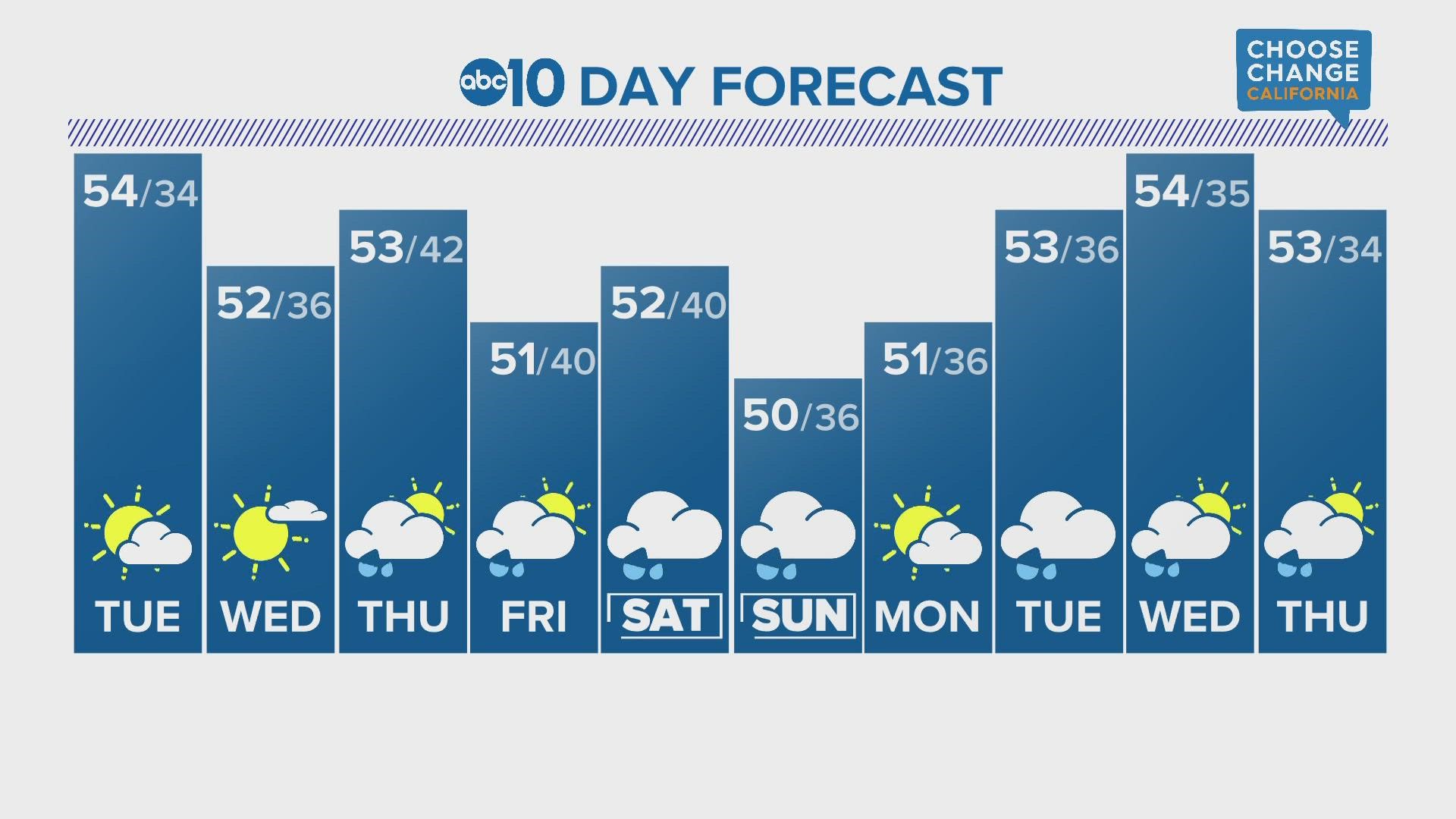SACRAMENTO, Calif. — A series of cold, wet storms reversed California's annual decline in water levels that begins with the onset of hot and dry weather in the late spring and early summer.
California's reservoirs rely on storms in the winter to fill up from rain runoff and melting snow in spring. The pace and level they rise depends entirely on the number of storms that come in and how powerful they are.
The location of the storms is very important as well, and will dramatically affect which lakes and reservoirs see levels rise.
At some point in the rainy season there comes a time when the outflow is outmatched by the inflow and you begin to see the water levels rise. This is being observed at some of California's largest reservoirs.
At the end of November, the water level at Lake Oroville was at roughly 658 feet and — as of early December — it has risen to roughly 660 feet. This is a small rise, but it is a significant moment.
Many recent storms have been very cold and much of the moisture has come as snow and has not yet melted to flow into the reservoirs. Lake Shasta recorded a low of roughly 885 feet in late October and recently came up to 895 feet.
Folsom Lake bottomed out at 377 feet and has seen a slight increase to 378 feet. This increase is small but marks the long rise to the eventual high point of the lake that usually happens in early spring.
The rate of rise as well as eventual height will depend on how many storms affect the watershed flowing into the lakes the rest of the season.
WATCH MORE: Is there a future for skiing in NorCal?



















